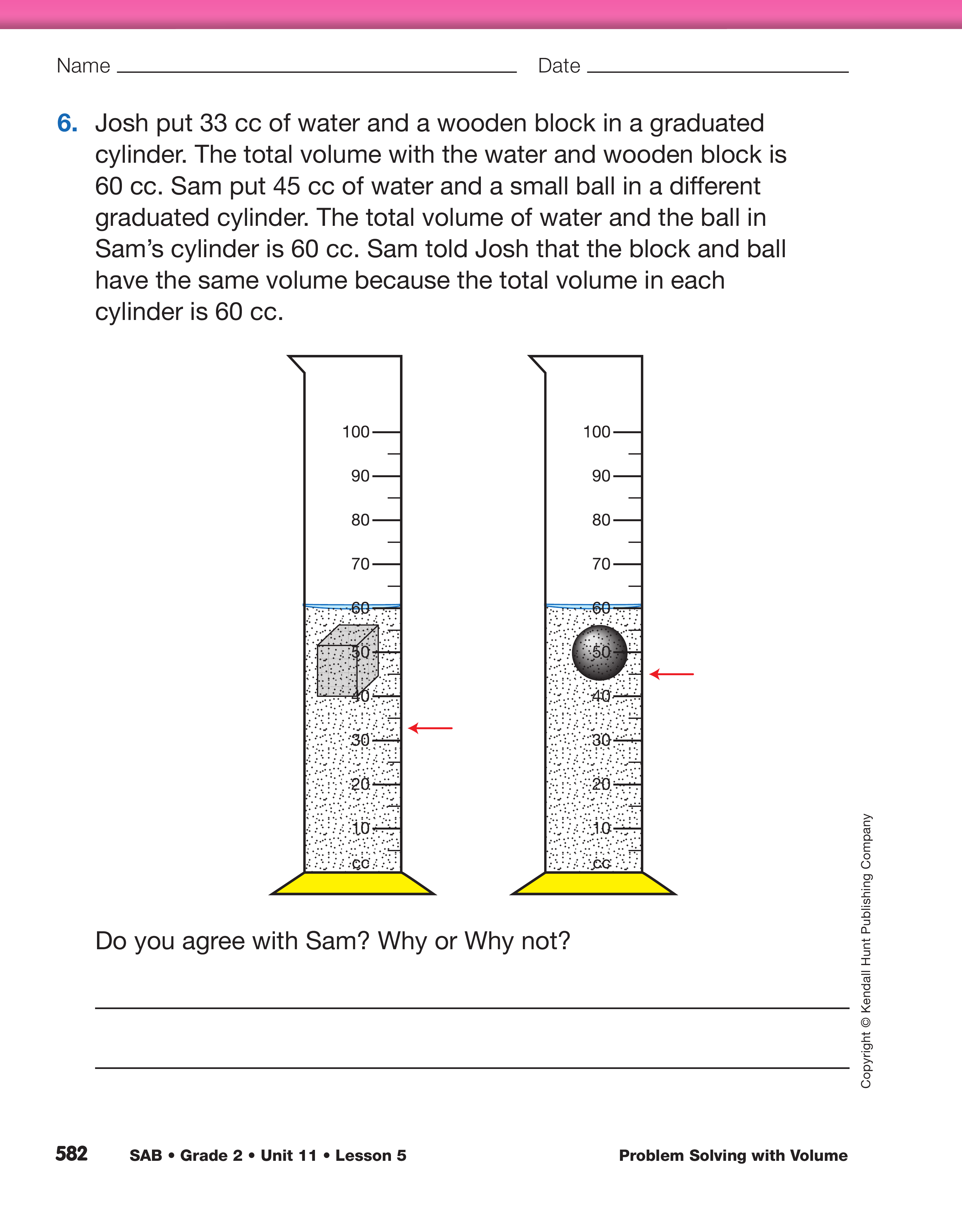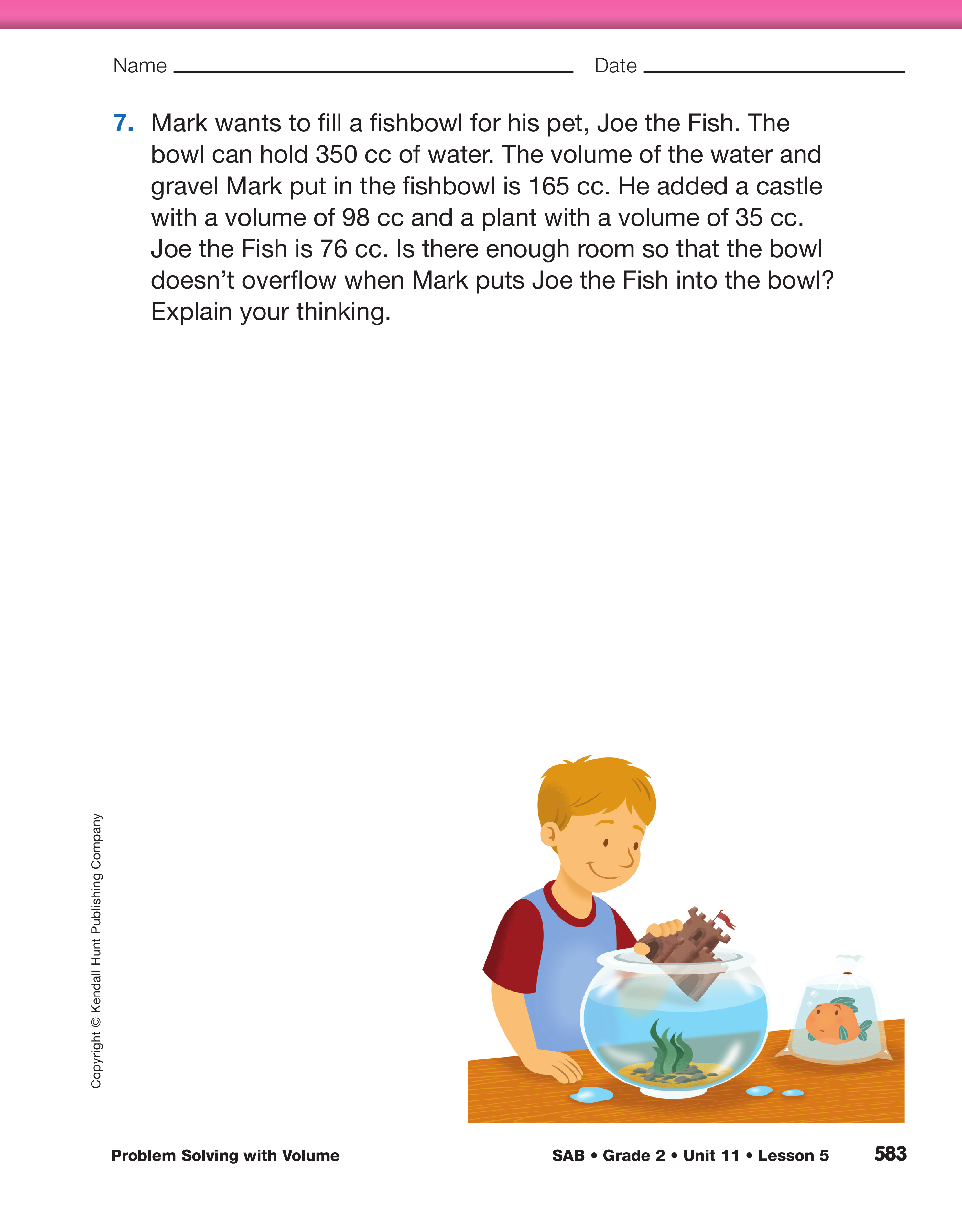Ask students to remove the Volume Math Check
pages from the Student Activity Book and ask students
to answer Question 1 independently. Once students
have had a chance to answer the question, refer
students to the Math Practices page in the Student
Activity Book Reference section and briefly review
the Math Practice Expectations.
- What can you do to help you know the problem? (Possible response: Draw a picture or act out the
problem.)
- What can you do to help you find a strategy? (Possible response: Act out the problem or draw
a picture of the problem.)
- What are some things that you can write down to
show your work? (Possible response: Write a
number sentence that shows how you thought
about the problem.)
- What labels will you use to show what the numbers
mean? (Possible response: cc, volume, starting
volume of water, total volume)
Direct students to answer Questions 2–7 independently
or working with a partner.
Circulate while
students are working and ask:
- Tell me how you solved [Question 4].
- Is there another way to solve this problem?
- How can you check if your answer is correct?
When most students have completed Question 7,
organize students into small groups to discuss and
share solution strategies. Choose a few students to
share their group's strategy with the entire class.
After each student shares, ask:
- How did you figure out what the problem was asking? (Possible response: We acted out the problem.)
- [Student name], tell us how this group solved the
problem.
- Does this strategy make sense?
Give students a chance to revise their work on
Question 7 before collecting it and evaluating it
using the Feedback Box.
Use the Volume Math Check pages with the Feedback Box in
the Student Activity Book to assess students' abilities to use
words and symbols (e.g., <, >, =) to show comparisons of
quantities (e.g., volumes) [E1]; solve addition and subtraction
problems (e.g., part-whole, join, compare) involving volume
[E3]; read and interpret a variety of scales (e.g., graduated
cylinder, thermometer) [E4]; measure volume by
displacement using a graduated cylinder [E5]; know the
problem [MPE1]; find a strategy [MPE2]; show work [MPE5];
and use labels [MPE6].





















